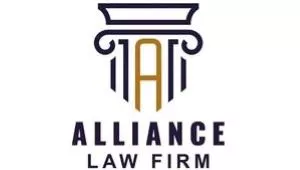1. Introduction
Safety management is a vital constituent of the oil and gas industry. In the wake of the Macondo Incident which happened in the United States and Gulf of Mexico. There has been a deep awakening to the need for effective safety regulations. Thus, countries like the United States, United Kingdom, Norway, Angola, China, Brazil, and Russia among others have adopted laws and regulations for safety in the Petroleum Industry. The primary purpose is to establish the occupational safety of employees, prevent the occurrence of accidents and guarantee safety and smooth operations in petroleum facilities. Taking into account the volatile nature of the raw materials used in petroleum production which are flammable and combustible under high temperature. There is a need for safety management practices to be put in place to curtail the aftermath of these activities. 1 For effective and efficient safety management to succeed in petroleum operations, the management down to the personnel must be involved in safety practices. Oil companies must ensure that all employees have a better understanding of safety awareness, to effectively implement and observe safety practices and culture.
Lack of safety awareness and training has been identified as one of the major reasons for the poor safety culture in the oil and gas industry which leads to disastrous accidents. 2 A lot of initiative actions have been taken, and rules and regulations were tightened and implemented in trying to curb these unwanted incidents. As a result of these, the Nigerian Midstream and Downstream Petroleum Regulatory Authority (NMDPRA) released its Midstream and Downstream Petroleum Safety Regulation 2023. The Regulations delineate the safety responsibilities and obligations of different categories of persons participating in midstream and downstream petroleum operations. This paper shall examine the sufficiency of the safety provisions and duties placed on various persons involved in petroleum operations.
2.0. The Midstream and Downstream Petroleum Safety Regulation 2023
The regulation was made under Sections 32(a), (b), (c) & (h) and 33 of the Petroleum Industry Act (PIA), 2021. It lays down safety standards that midstream and downstream petroleum operations must comply with occupational health and safety, sets forth permits, authorisations, and fees as well as penalties, sanctions, and administrative fines for default of the provisions of the Regulation by Midstream and Downstream Petroleum Operators. All of these are incorporated in the six parts of the Regulations. It also provides for the duties of licensee and permit holders, manager, and personnel, in addition, to the responsibility and requirement for diving operations which shall be examined below:
2.1. Duties of Licensee and Permit Holders
The role of the licensee in the promotion of the safety of petroleum operations is paramount, thus there is a great burden on the shoulders of the permit holder to ensure that safety provision is made for every cycle of operations. This duty has been laid down in Reg. 3 and 4 of the Regulations. The licensee/permit holder is expected to appoint a "manager" who shall be in charge of all the operations authorized by the Nigerian Midstream and Downstream Petroleum Regulatory Authority (the Authority) and notify the Authority within 72 hours of such appointment. They are mandated to provide personal protective equipment (PPE) of internationally approved standard, emergency medical procedures, properly equipped well-side clinic, first aid boxes and other necessary medical facilities on site for medical intervention. Firefighting and first aid equipment of the best industry standards must be installed in every facility.
The permit holder must develop health protection and promotion programmes, provide a safe operational procedure for its personnel and ensure that all of its personnel and contractors undertake occupational fitness tests. The licensee must ensure that the safety of operations must be spelt out in all contract documents. Contingency procedures in case of an emergency must be developed and maintained. Emergency plans for managing hazardous events must be developed and updated regularly. It is the primary duty of the permit holder to ensure that all laboratories used for petroleum operations are accredited by the Authority and undertaken with the appropriate and valid permit or authorisation. The licensee/ permit holder when implementing facility or equipment design, and engineering, amongst others, must ensure it has the following already in place: comprehensive safety studies; ensure that all major hazards are identified and reduced as low as reasonably practicable (ALARP); safety, emergency and communication systems of accepted standards; conduct a pre-startup audit; a valid and duly approved safety case/ safety clearance for every facility.
2.2. Duties of a Manager
The manager is in charge of all petroleum operations and is mandated to appoint a competent person to be responsible for and oversee the health, safety, environment and community matters. Such appointment must be reported to the Authority within 72 hours. The manager is required to ensure that the personnel are adequately trained on how to discharge their duties safely, provide adequate safety equipment of international standards, ensure that PPEs are used properly and in serviceable conditions at all times, and provide barriers and risk reduction measures to reduce hazards ALARP. The manager is charged with the responsibility of ensuring there are functional medical facilities equipped with the appropriate medicaments, as well as competent personnel to deal with injuries and cases requiring first aid. The manager must see to it that names, addresses and information of the nearest physician, hospitals and ambulance services are conspicuously displayed at every facility, ensure that pre-employment medical assessment is conducted on every employee and carry out periodic medical assessments biennially.
The manager is expected to make available the following protection for its personnel: (a) appropriate and adequate hearing protection devices and conduct annual audiometric tests for all personnel working in high noise areas and forward the result to the Authority; (b) provide basic safety emergency and survival training and refreshers for personnel in offshore or swamp operations; minimum industry including basic first aid and Cardiopulmonary Resuscitation (CPR); confined space escape; basic firefighting and self-rescue; helicopter underwater and survival-atsea training and lifeboat operation and usage. The manager is also to ensure that appropriate refresher courses are taken on minimum industry safety, advanced safety and any other training required by the Authority. The manager shall ensure that all equipment is operated and kept within its Integrity Operating Window (IOW) and properly maintained. The manager must ensure that only trained personnel properly kitted with appropriate PPEs can enter a confined or semi-confined space and such an area is certified as safe. There must be adequate spares for critical safety equipment readily available for use. Hazard classification must be carried out and restricted areas prohibiting open light, fire and smoking, must be designated and approved firefighting equipment must be adequately provided. The manager is obligated to train personnel on the use of firefighting equipment with clear instructions conspicuously displayed on the location of the equipment. Furthermore, it must be ensured that there is a fire clearance zone of 3 metres around the perimeter fence of any petroleum operation.
It is the manager who is responsible for the safety of all personnel and contractors and thus must put in place adequate safety and risk awareness training and certifications given to contractors and personnel before their deployment, whether offshore or onshore. The manager is obligated to establish a system of reporting and ensure that all incidents are reported by the personnel. In addition, all reports of accidents involving death, fire explosion or serious injury must be reported to the Authority within 24 hours of their occurrence. The manager must provide the relevant equipment and systems to immediately detect and effectively control greenhouse gases or other harmful combustible gases. The latter will ensure that special shielded containers are used in storing and transporting radioactive sources. The manager must make sure that safety signs are put in place to create awareness, caution and direction in "no smoking", "high noise" "muster point" and "exit" areas. Nearby emergency contact numbers and firefighting outfits must be displayed. Also, safe access must be provided in all of its operations and such access must be kept obstructionfree.
For diving operations, the manager shall ensure that the responsibilities, guidelines and directives for all personnel engaged in the activity are written. The diving contractor retained on a long-term basis must be evaluated every six months to ensure that their performance is per approved standards. All equipment deployed in diving operations must be in perfect condition. The manager shall ensure that illumination is provided where diving operations are to be conducted in darkness and each gas cylinder used in the diving operation must be marked with its content particulars and expiration date. The diving facility and equipment must be regularly examined and certified as safe for use by a competent person within six hours of a diving operation.
2.3. Duties of Personnel
Personnel are competent persons appointed by the manager, responsible for and overseeing the health, safety, and environment. They are also responsible for community matters and the implementation of the Regulation. The personnel will observe all safety measures in the petroleum facility where work is in progress. Persons below 18 years are prohibited from being engaged to work in dangerous areas. Also, approval must be obtained before any person can accumulate flammable and combustible materials in storage facilities. All personnel working in a facility where petroleum operations are carried out must wear PPE to protect themselves from hazards. Fall protection devices are also required for persons working at a fixed workstation or other highrise installation or at a height above six feet. Loose materials of any kind, tools or machine parts are prohibited on elevated platforms unless they are required for immediate use and there is adequate protection for persons below. Safeguards must be continually worn as long as the machinery relating to it is still in operation, and all machines must be shut down during repairs or adjustments. Only a qualified person shall handle, open or restore flameproof or explosion-proof equipment; repair adjust or maintain signaling equipment. Persons in a petroleum facility are prohibited from sleeping, consuming alcohol or hard drugs while on duty or being admitted for duty under the influence of alcoholic substances or hard drugs. Smoking, firearms, explosives, setting up of fire, and use of uncertified digital devices are all prohibited in any restricted area. Personnel must ensure that safety measures are put in place before the commencement of any work, and any escape of petroleum liquids or gas from pipelines or installations must be immediately reported to the manager.
2.4. Penalties
The Authority is empowered to inspect any facility or premises suspected to be in breach of the Regulation. Where a licensee or permit holder breaches the provisions of the Regulation, such person shall be liable to an administrative penalty of USD250,000 and revocation or suspension of that license or permit. This is in addition to any sanction or fine prescribed under the PIA. A manager in contravention of this Regulation shall be liable to an administrative penalty of N5,000,000 maximum.
3. Conclusion
The Regulation provides a robust framework for the safety and health practices in midstream and downstream petroleum operations in Nigeria, necessary to prevent and reduce accidents ALARP and promote occupational health and safety of workers. Thus, it obligates everyone involved in this sector to uphold safety practices beginning from the permit or license holder, and manager, to personnel working in the facilities and installations. Notable are the requirements for health protection programmers and occupational fitness tests by contractors cum personnel. Also is the availability and proper use of PPEs including fall protection and noise reduction devices. Personnel are not allowed to commence work in facilities where safety measures have not been put in place. The need for functional medical facilities in the facilities, equipped with adequate medications and qualified personnel is paramount in ensuring swift medical attention in cases of injury situations. Finally, the regular training of personnel on safety practices is necessary for the full implementation of this Regulation.
Footnotes
1. QI Fu-yuan and JIANG Zhong-ting, "The Importance of Safety Production and Humanistic Management in Petroleum Project" (2017) (6) (1) World Construction. 45-46.
2. F. Ismail, "Steps for the Behavioural Based Safety: A Case Study Approach," International Journal of Engineering and Technology, vol. 4, pp. 594-596, 2012.
The content of this article is intended to provide a general guide to the subject matter. Specialist advice should be sought about your specific circumstances.


